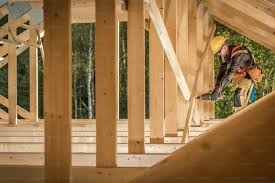
The urgency of addressing the housing crisis has emphasised the importance of constructing homes as efficiently as possible. When considering construction methods, timber frame construction emerges as a solution.

Timber frame construction offers flexibility enabling designers and self builders to incorporate the beauty of wood features, such as exposed beams in their designs. Unlike stick framing, timber frames eliminate the need for load bearing walls. This creates interiors with high ceilings. By using joints like mortise and tenon, timbers can be crafted to be stronger than their stick counterparts. This results in enhanced integrity and durability. For information on a Timber Frame Company, visit merlintimberframe.co.uk
Furthermore timber possesses insulation properties. The cellular structure of timbers contains air pockets that serve as insulators thereby reducing energy costs by maintaining temperatures year round.

One notable advantage of timber frame construction is its level of prefabrication. Much of the work can be completed in a factory or carpentry shop before being transported to the site, for assembly. This significantly decreases on site labour time and overall construction expenses.
This process conducted outside the location can also have impacts on the environment. By utilising already dead timber as well as minimising waste materials we are able to reduce our impact on the environment. It’s important to note that timber being an organic material can be vulnerable to moisture seepage. Therefore it requires maintenance to prevent any damage and ensure its structural stability is preserved.
